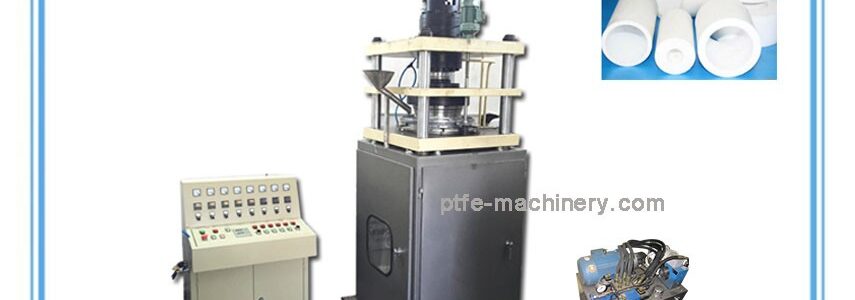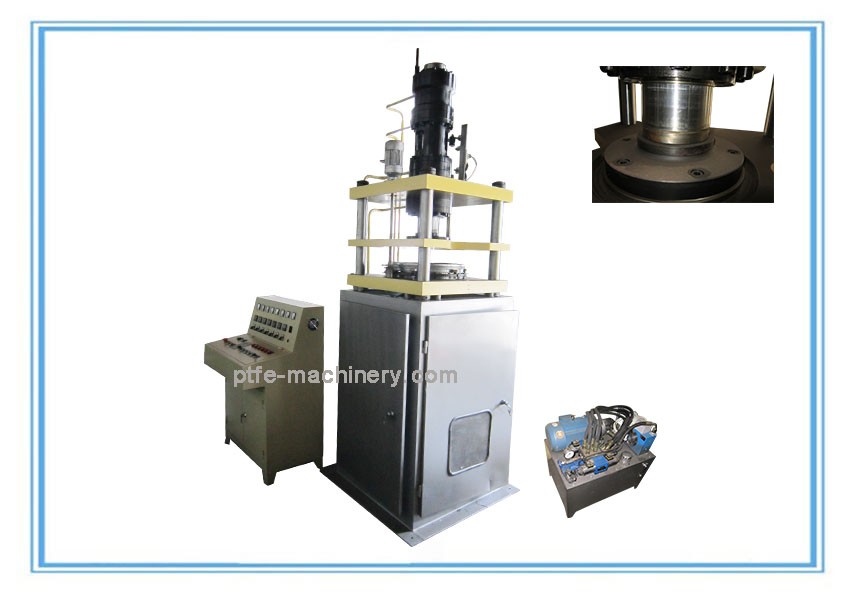More and more, PTFE tubing is replacing carbon and other metal piping that deteriorates rapidly. Now and for the future, PTFE will continue to serve the industry in critical applications.
Manufacturing Process of PTFE:
| CHCL3 + 2 HF | CHClF2 + 2 HCl |
| 2 CHClF2 | CF2 = CF2 + 2 HCL |
| n CF2 = CF2 | (-CF2 – CF2 -) n |
| Tetra-Fluoro-Ethylene (TFE) | (PTFE) |
Chemical Qualities*: PTFE is inert to the following chemicals
| Inorganic Chemicals | Organic Chemicals | Other |
| Aqua Regia | Alcohols | Biological Fluids |
| Hydrofluoric Acid | Esters | Fragrances |
| Fuming Sulfuric Acid | Ketones | Food |
| Chlorosulfuric Acid | Highly Halogenated Organics | Printing Inks & Dyes |
| Boiling Sodium Hydroxide Solution | Aromatic Solvents | Low Level Radioactive Substances |
| Chlorine Gas | Amines | Oxidizers |
| Hydrogen Peroxide | Industrial Oils | |
| Acid Chlorides | ||
| Hot, Fuming Nitric Acid |
*Among the only chemicals known to attack PTFE are molten alkali metals and their solutions, chlorine trifluoride, and gaseous fluorine at elevated temperatures and pressures.
Thermal Qualities:
PTFE tubing can withstand temperatures up to 680 °F for limited periods of time.* Under cryogenic conditions, PTFE remains strong down to -320 °F.
*Above 500 °F, mechanical properties become a limiting factor
Electrical Qualities:
PTFE tubing has superb electrical properties, indicated by a low dielectric constant of 2.1 between -40 °F and 480 °F within a frequency range of 5 Hz to 10 GHz.
PTFE tubing is also an excellent insulator with surface resistivity of 3.6 X 1012 ohms (even at 100% relative humidity).
Short time dielectric strengths range from 500 volts/mil (1 mil = 10-3 in) for thicknesses greater than 100 mils to 4000 volts/mil for very thin films.
UV and Radiation Qualities*:
PTFE tubing has excellent UV resistance and weatherability, with a radiation dose threshold for PTFE at 2 – 7 X 104 rads. Absence of oxygen increases radiation resistance by a factor of at least 10.
*Resistance to electron and gamma radiation is relatively poor
Wear and Friction Qualities:
PTFE tubing has a relatively slippery and smooth surface, with a static coefficient of friction of 0.08 and 500 psi load.
The PTFE properties make it particularly suitable for use as bearing pads, under high pressure-low velocity load conditions. Examples are bridge bearing pads, pipe support pads, and mounting pads for heavy manufacturing.
Short List Applications:
- Non-Shrink & Heat Shrink Tubing
- Heat Exchangers
- Coatings
- Carburetor Shafts
- Medical Catheter Guide Wires
- Mold Release
- Cryogenic Applications
- Automotive Brake Parts
- Jet Fuel Filters
- Bearing Pads
Chemical Reasoning for PTFE Properties
| High C-F Bond Strength & No UV Absorption Sites | Thermal Stability Oxidative Stability Non-Flammability Chemical Resistance Resistance to Weathering |
| Enormous Chain Length | High Melt Viscosity |
| Low Inter-chain Forces | Excellent ToughnessLow Coefficient of Friction |
| Low Forces Between F Atoms and Molecules | InsolubilityLow Solvent Absorption |
| High Crystallinity | Non-Stick PropertiesLow Water Absorption |
| No Permanent Dipole | Low Dielectric Constant |
| No Surface Chemistry | High Static Charge |




